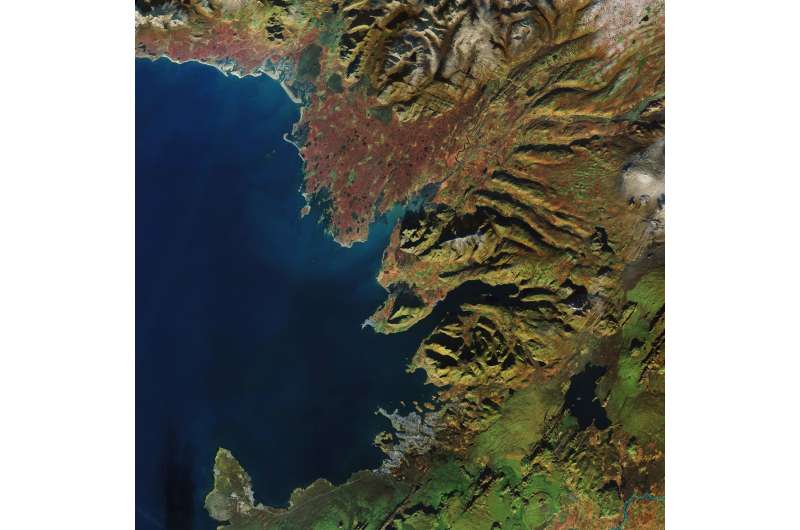Image: Reykjavik, Iceland

The Copernicus Sentinel-2A satellite takes us over the capital of Iceland, Reykjavik. As a volcanic island famous for its volcanoes, glaciers, lakes, lava and hot springs, Iceland attracts tourists all year round with its vast array of natural wonders.
Click on the box in the lower-right corner to view this image at its full 10 m resolution directly in your browser.
This true colour image shows us the small city of Reykjavik, home to around 120 000 people, and seen in the lower central part of the image. The port town of Akranes, 20 km north of the capital, is also shown in grey in the centre of the image. In between the two lies Mount Esja, standing just over 900 m tall, and providing a dramatic backdrop to the capital.
In the upper left part of the image, 'kettle holes' are visible as small dark green dots scattered across the reddish brown area. Kettle holes are formed when blocks of ice break away from glaciers and then become buried in outwash. When these buried blocks of glacier ice melt away they leave behind holes, which become filled with water and turn into kettle hole lakes. They are often found in areas that were covered in ice during the last ice age, which ended around 12 000 years ago. Kettle holes are common in Michigan in the United States, as well as in parts of Germany, Austria and the UK.
The Sentinel-2 mission is tasked with monitoring our changing lands. Designed specifically to monitor vegetation, it can also detect differences in sparsely vegetated areas, as well as the mineral composition of soil, as found in Iceland.
Provided by European Space Agency




















